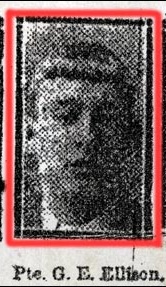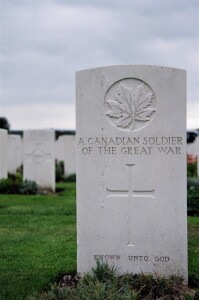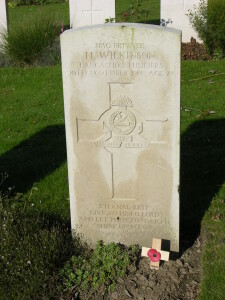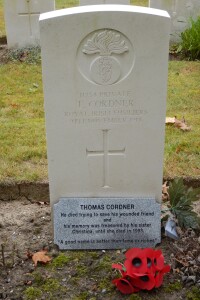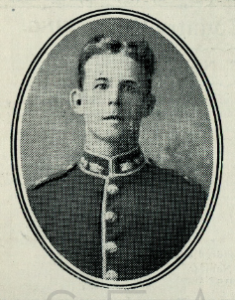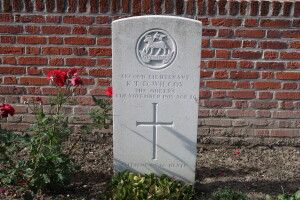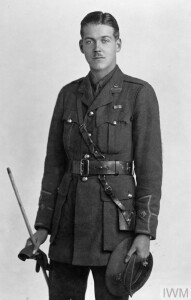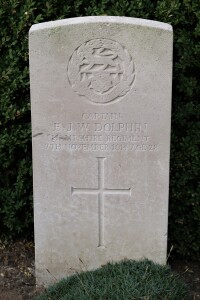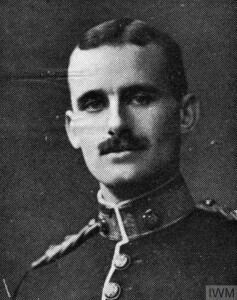11 November (1918)…
Posted By pferguson on November 11, 2021
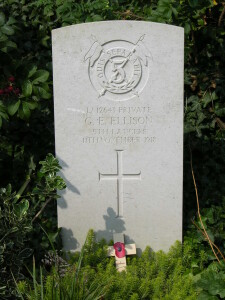
Private George Edwin Ellison
11 November 1918
St. Symphorien Military Cemetery
(P. Ferguson image, September 2006)
Private George Edwin Ellison
L/12643
5th (Royal Irish) Lancers
Son of James W. and Mary Ellison, George Ellison was born in York and raised in Leeds where today a memorial to him has been placed at Leeds Railway Station. The commemorative plaque, normally blue in colour, is olive green representing the British soldier uniform of the time. George was married to Hannah Maria Ellison and together they had one son – James Cornelius. George Ellison, age 40, is believed to be the last British battle casualty of the Great War.
Located 2 Kms east of Mons, Belgium, St. Symphorien Military Cemetery was established by the German Army for the burial of German and British troops killed during the Battle of Mons. The first British fatality of the Great War, 21 August 1914, is buried here – Private John Parr, Middlesex Regiment (grave 1.A.10) faces the grave of Private Ellison (grave 1.B.23). The cemetery remained in German hands throughout the war and it was not until after the Armistice that the burial ground was placed into the care of the Imperial War Graves Commission. St. Symphorien includes 284 German and 229 British burials, 105 are unidentified soldiers of the Great War.
Much has been written about Private Ellison who was killed by a sniper while on patrol in a wooded area at 9:30 AM, ninety minutes before the Armistice came into effect. Private George Lawrence Price of the 46th Canadian Infantry is the last known British Empire soldier to fall at 10:58 AM. Ellison served throughout the Great War fighting at the Battle of Mons, Ypres, Armentières, La Bassée, Lens, Loos and Cambrai. Ellison’s brother, Skipper Frederick Thomas Ellison, age 40, of H.M. Trawler Towhee was killed 15 June 1917 when his vessel was lost in the English Channel and is commemorated on the Chatham Naval Memorial. Frederick left behind his wife Maud and two sons.
And so….
…this brings to a close this year’s inaugural November series. As I think upon all these images I have taken (and those not taken), all these wanderings – wondering …what stories remain to be told…I think one more thought about these 11 days of writing and what these soldiers endured through four years and 106 days of the Great War….Perhaps, just perhaps Ellison (11 November 1918), Wilkinson (10 November 1914), Cordner (9 November 1914), Wilcox (8 November 1915), Dolphin (7 November 1915), Merrill aka Stanley (6 November 1917), Allen (5 November 1914), Norris (4 November 1918), Davies (3 November 1915), Rogozinski aka Rosen (2 November 1914), and Foy (1 November 1914) would have me consider…all of the others…the ones I have not written about and so too the survivors but perhaps especially those soldiers whose graves are marked Known Unto God. We will remember them…we will remember them all.
This Day
11 November 1918
910 Fatalities
The Great War
21 August 1914 – 11 November 1918
994,309 Fatalities
Source: Commonwealth War Graves Commission

